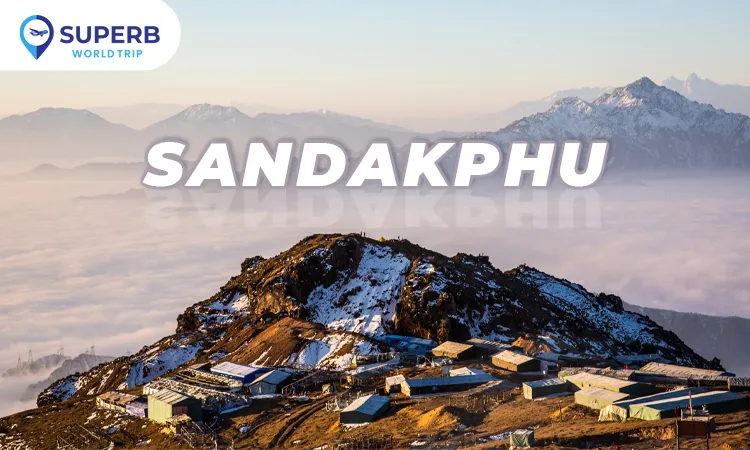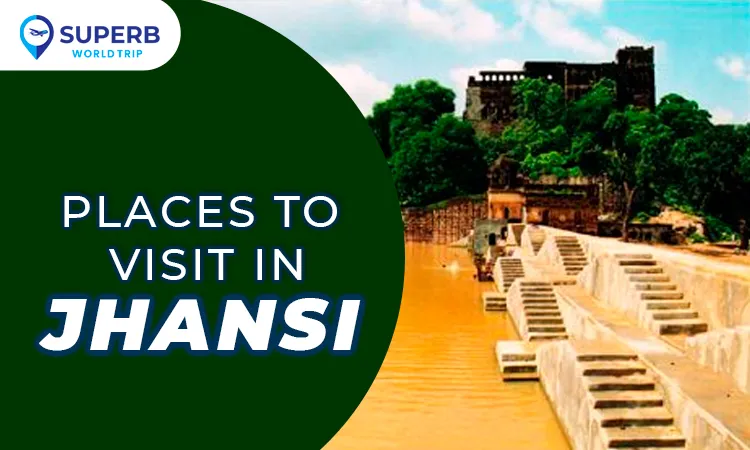Sandakphu Travel Guide: Explore the Roof of West Bengal

Tucked away in the Singalila Range of the Eastern Himalayas, Sandakphu is often called the “Roof of West Bengal.” At an altitude of 3,636 meters (11,941 feet), it’s the highest point in the state and offers one of the most spectacular views in India. From here, you can see four of the five highest peaks in the world—Everest, Kanchenjunga, Lhotse, and Makalu—standing tall like sentinels guarding the horizon.
This comprehensive guide will help you discover the beauty of Sandakphu, from its breathtaking treks and viewpoints to nearby attractions, weather, and local culture.
Overview of Sandakphu
Located along the border of India and Nepal, Sandakphu is part of the Singalila National Park, a protected area known for its biodiversity. The region is a paradise for trekkers, nature lovers, and photographers. The route leading to Sandakphu is one of India’s most scenic trekking trails, with dense forests, rhododendron blooms, and panoramic mountain views.
The name “Sandakphu” literally means “Height of the Poison Plant,” referring to the Aconite plants that grow abundantly in the region. Despite the name, the place is nothing short of heavenly.
Best Time to Visit Sandakphu
Sandakphu is a year-round destination, but the experience varies depending on the season:
- March to May (Spring) – The best time for nature lovers. The hills are alive with blooming rhododendrons, magnolias, and orchids.
- October to December (Autumn) – Ideal for trekkers and photographers. The skies are crystal clear, and you can enjoy perfect views of the entire Himalayan range.
- January to February (Winter) – For adventure seekers who don’t mind snow and cold. Snowfall transforms Sandakphu into a winter wonderland.
- June to September (Monsoon) – Not recommended due to heavy rainfall and slippery trails.
How to Reach Sandakphu
Reaching Sandakphu requires a bit of adventure, but that’s part of its charm.
- By Air: The nearest airport is Bagdogra Airport, about 115 km away. From there, you can hire a taxi to Manebhanjan, the base village for the Sandakphu trek.
- By Train: The closest railway station is New Jalpaiguri (NJP), about 118 km from Manebhanjan.
- By Road: Manebhanjan is well connected by road from Darjeeling (26 km), Siliguri, and Mirik. From here, you can either trek or take a Land Rover to Sandakphu.
Fun Fact: The rugged Land Rovers that ply the route are vintage British-era vehicles, some dating back to the 1950s, still roaring through the steep mountain roads!
Top Attractions in and around Sandakphu
1. Sandakphu Viewpoint
The main attraction of Sandakphu is its panoramic viewpoint. On a clear morning, you can witness the majestic Kanchenjunga range, famously known as the “Sleeping Buddha” because the peaks resemble the shape of a reclining figure. Far beyond, the snow-clad summits of Everest, Lhotse, and Makalu glisten in the sunlight.
2. Singalila National Park
Home to rare and exotic species like the Red Panda, Himalayan Black Bear, and Barking Deer, Singalila National Park is a treasure trove of biodiversity. The park is also rich in flora, with over 600 varieties of orchids—making it one of the world’s most orchid-diverse regions.
3. Tumling
Just before reaching Sandakphu, Tumling is a small, scenic village offering mesmerizing views and cozy homestays. The Nepal-India border passes right through the village, and you can freely cross over to the Nepalese side for a short walk.
4. Chitrey Monastery
Located near Manebhanjan, Chitrey Monastery is a peaceful Buddhist site surrounded by fluttering prayer flags. It’s often the first stop on the Sandakphu trek, providing a perfect spiritual start to the journey.
5. Phalut
Phalut is the second-highest peak in West Bengal and lies about 21 km from Sandakphu. The trail from Sandakphu to Phalut offers panoramic views of the Himalayas and lush alpine forests. Trekkers often camp overnight here to catch the early sunrise over Kanchenjunga.
6. Gairibas and Kalipokhri
These small villages en route to Sandakphu are popular halting points for trekkers. Kalipokhri is named after its black-colored lake, considered sacred by locals. The route between these villages is filled with rhododendron and oak forests, offering postcard-perfect scenery.
The Sandakphu Trek
The Sandakphu Trek is one of India’s most iconic Himalayan treks. It’s moderate in difficulty, making it suitable even for first-time trekkers.
- Starting Point: Manebhanjan (7,054 ft)
- Highest Point: Sandakphu (11,941 ft)
- Distance: Approximately 32 km one way
- Duration: 4–5 days to ascend, 2–3 days to descend
The trek passes through a mix of terrains—forests, meadows, ridges, and rural hamlets. Along the way, trekkers are rewarded with changing landscapes, local hospitality, and the constant presence of the mighty Himalayas.
Trek Highlights:
- Stay in local homestays offering warm Nepali meals.
- Experience sunrise and sunset from different viewpoints.
- Spot exotic wildlife and birds.
- Capture the Sleeping Buddha formation of Kanchenjunga.
Local Cuisine
Food in Sandakphu is simple yet hearty, perfect for the cold climate. Expect a mix of Nepali, Tibetan, and Indian flavors.
- Momos & Thukpa: Steaming dumplings and noodle soup are available in almost every eatery.
- Dal Bhat: A staple Nepali dish of rice, lentils, and curry.
- Churpi: A local cheese made from yak milk, often dried and chewed like candy.
- Butter Tea: A traditional Tibetan drink that keeps you warm in the cold mountain air.
Homestays often serve freshly cooked local meals made from organic ingredients.
Where to Stay in Sandakphu
Accommodation options in Sandakphu range from basic to moderately comfortable:
- Homestays: The most popular choice. They offer cozy rooms, warm meals, and a chance to experience local hospitality.
- Trekkers’ Huts: Simple government lodges available at various points along the trail.
- Eco Lodges: A few eco-friendly properties are now available, especially in Tumling and Phalut, focusing on sustainable tourism.
Booking in advance is recommended during peak seasons (March–May and October–November).
Travel Tips for Sandakphu
- Prepare for Altitude: Acclimatize properly to avoid altitude sickness. Stay hydrated and avoid rushing the trek.
- Pack Smart: Carry warm clothes, a windproof jacket, trekking shoes, and a good camera.
- Limited Connectivity: Mobile networks are weak, especially after Tumling. Enjoy the digital detox!
- Carry Cash: ATMs are not available beyond Darjeeling or Siliguri.
- Respect Nature: Sandakphu lies within a protected zone; avoid littering or disturbing wildlife.
- Hire a Guide: For first-time trekkers, hiring a local guide or porter ensures safety and adds cultural insight.
Nearby Attractions
- Darjeeling (58 km): A must-visit hill station known for tea gardens, toy trains, and stunning viewpoints.
- Mirik (72 km): Famous for its lake and orange orchards.
- Kalimpong (85 km): Offers monasteries, gardens, and colonial-era charm.
These destinations make perfect add-ons for your Sandakphu trip.
Why Visit Sandakphu?
Sandakphu isn’t just a place—it’s an experience that connects you with the Himalayas in their purest form. Watching the sun rise over the world’s tallest peaks, feeling the wind sweep across mountain ridges, and walking through rhododendron forests—it all feels surreal.
It’s a destination that tests your endurance, rewards your spirit, and leaves you with memories that last a lifetime. Whether you’re a trekking enthusiast, a photographer, or a traveler searching for peace, Sandakphu is where heaven meets earth.
Latest Post
Best Places to Visit Near Raipur: Top Tourist Destinations for a Perfect Getaway
Top Places to Visit in Gwalior: A Complete Travel Guide (2025)
Top Places to Visit in Hampi: A Complete Travel Guide (2025)
Top Places to Visit in Surat: A Complete Travel Guide for 2025
Best Places to Visit in January in India – Winter Travel Guide 2025
Places to Visit in Ujjain: A Complete Travel Guide for 2025
Best Places to Visit in Winter in India: A Complete Travel Guide for 2025
Top Places to Visit in Jodhpur – Ultimate Travel Guide 2025
Best Things To Do In Araku Valley – A Complete Travel Guide (2025)
Best Places to Go in Chikmagalur The Complete Guide to Travel Guide
Best 15 things you can do while in Phuket, Thailand—Your Ultimate Travel Guide
Top 20 Things to do in Coimbatore The Complete Travel Guide
What to See and Do In Gokarna A Comprehensive Travel Handbook for the First-Time Visitor
Things to do in Ooty: The top attractions, activities and the Travel Guide
Gulmarg: India’s Most-Searched Winter Destination – A Comprehensive Travel Guide by SuperbWorldTrip

Phuket, Thailand’s Largest Island, is an Idyllic Tropical Destination

Places to Visit in Bhutan: Journey into the Land of Happiness

Jhansi: the Historical Heart of Bundelkhand

Attractions to Visit in Kutch – Exploring Gujarat
